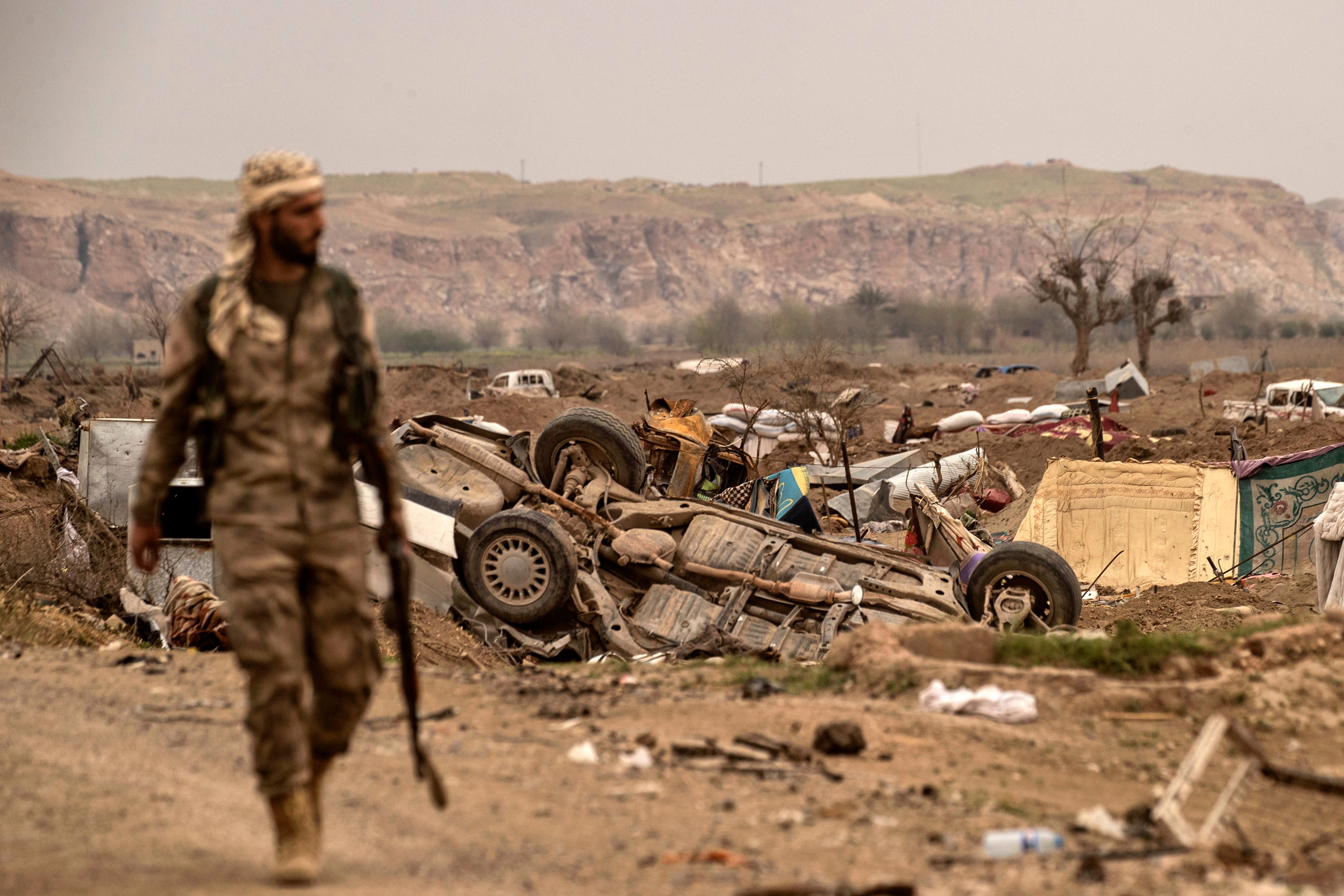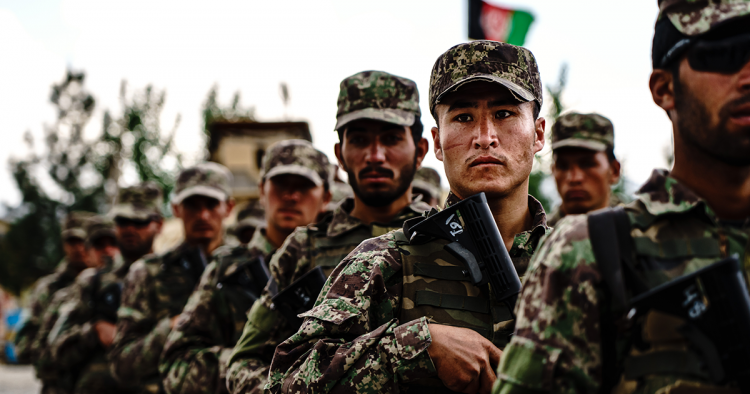Introduction
It took the Taliban just three and a half months to undermine a 20-year international effort to build a competent Afghan military, a defeat already compared to the Bay of Pigs debacle in 1961 and the fall of Saigon in 1975.
The Afghanistan National Army (ANA) collapsed once it was clear the U.S. was pulling out ground troops and ceasing air support operations after two decades of training and sustainment that cost the American taxpayer approximately $83 billion. When required to stand alone, against a Taliban force, the ANA failed unequivocally.
Building the ANA as a mirror image of the U.S. military was strategically and operationally flawed. If they are designed to fight like the U.S. but cannot fight in the absence of U.S. forces, they are ineffective. What lessons should we learn from this and how could our approach be different in the future?
A brief history
Between 2001 and 2021 the U.S. lost 2,448 military service members, an undisclosed number of CIA officers, and 3,846 contractors in Afghanistan. During those years, troop levels fluctuated, peaking in 2009 with the U.S. surge that put 130,000 service members on the ground in direct combat operations.
Since 2009, the number of service members in Afghanistan declined substantially, to approximately 2,500, when President Joe Biden announced the U.S. was pulling out all forces. At that point, very few were involved in direct combat operations and the corresponding risk to U.S. service members was low. U.S. military leaders estimated 5,000 troops were needed to remain in Afghanistan to preserve the gains fought for in that country, as well as to provide regional stability.
The withdrawal of U.S. forces is cast as ending a “forever war.” Yet, almost every war the U.S. has fought could arguably be characterized as ongoing. We typically “end wars” yet leave U.S. service members in those regions. Since World War II, we have had troops stationed in Germany, Italy, and Japan. As a result of the Korean War, we currently have 28,500 service members in the Demilitarized Zone between South and North Korea. Do we consider World War II and the Korean War as ongoing “forever wars?” No. We are also still deployed to Kosovo, Syria, and several other countries. Yet none of those are termed “forever wars.”
Having 5,000 service members deployed to Afghanistan is a very small number in comparison to our footprint in Europe and Korea. If the number of service members deployed isn’t an issue, is the financial investment the deciding factor?
The US taxpayer burden
At $2 trillion, the total U.S. spending in Afghanistan is staggering, with $83 billion of that going to building and training the ANA. Does it cost $83 billion to build an army that can’t fight its peer equivalent? How can we fight with a lower fiscal requirement, allowing ourselves the strategic patience to be successful?
We propose one way to do so is to maximize the irregular warfare capabilities of the U.S. using small number forces composed of the intelligence community and special operations to conduct counter-terrorism missions through partner force operations and indigenous-based village stability operations (VSOs).
If security efforts are conducted by-with-and-through a viable partner force, and sustainability efforts are done by local indigenous leaders, they become small fiscal investments with minimal risk to the U.S. personnel.
Despite empty words to the contrary, over the last 20 years, these principles haven’t been used as a strategic approach for security and stability.
A flawed approach
The war in Iraq is estimated to have cost the U.S. over $2 trillion. Hundreds of billions of dollars have been spent on tanks, helicopters, fighter aircraft, armored personnel carriers, artillery, and small arms, yet in June 2014, an irregular militant army of lightly equipped ISIS terrorists defeated the Iraqi Security Forces, murdering Iraqi leaders and brutalizing Iraqi citizens with very little resistance. ISIS then commandeered the military equipment and employed it to support its goal of building a so-called caliphate. The decade-long effort to create an Iraqi force in mirror image to the U.S. failed miserably.
To deal with the ISIS terrorists, the Obama administration approved an approach based on using a viable partner force, the Kurdish-led Syrian Democratic Forces (SDF), supported by an international coalition to defeat ISIS terrorists in Syria. This wasn’t done by spending billions of dollars trying to recreate the U.S. military, it was done by taking a capable indigenous force and providing them with key enabling capabilities. Special operations combat advisors, timely intelligence on the enemy, logistical support, and most importantly close air support tipped the scales of success in favor of the SDF. It was a model that simply gave our partners the “tactical advantage” to defeat our common enemy. It cost approximately $2.2 billion, far less than our overall efforts in Iraq.
This tactical advantage approach lowered the risk to U.S. personnel. It also lowered the fiscal lift on the U.S. taxpayer.

Security operations
The tactical advantage approach is an operational paradigm detailed in our paper “A Tale of Two Partners: Comparing Two Approaches for Partner Force Operations,” focused upon creating a capable force to defeat an enemy with relatively minimal investment, lowering the risk of U.S. casualties while preserving regional stability.
This model has been proven not only with the SDF, but also in the initial push into Afghanistan with the Northern Alliance and the first teams into Iraq with the Kurds. Each instance involved small numbers of critical U.S. combat enablers assisting a viable partner force while leveraging key U.S.-specific combat capabilities, most importantly close air support.
The tactical advantage approach gives the U.S. flexibility to continue with the partner force operations for as long as needed, all the while equipping the force with rudimentary weapons. Partners need to be on par with the enemy, and critical conflict-changing weapons and capabilities remain in the custody of U.S. personnel. The tactical advantage is based on supply chains organic to the force and region, i.e., Toyota Hilux trucks, PKMs, rocket-propelled grenades, and AK-47s. The approach creates a capability that is sustainable after the withdrawal of U.S. support.
During the ISIS rampage across Iraq and the blitzkrieg of the Taliban through Afghanistan, television networks were awash with images of sophisticated multimillion- dollar tanks and helicopters in the background of a Toyota-based terrorist parade.
Stability operations
There must be an effort to backfill gains made through security operations. Indigenous, home-grown stability solutions are optimal. To avoid a foreigner stigma, these stability efforts must hide the hand of the U.S. Therefore, teams of Department of Defense (DoD) and CIA personnel would be the most effective at conducting an indigenous-based version of VSO.
In VSO, small numbers of U.S. forces work with willing local communities to develop their defenses against common enemies, thereby denying the enemy both terrain and access to the populace. These stability operations have been undertaken in the past, though they were too reliant on the logistical support of the U.S. and didn’t produce desired outcomes.
Similar to the tactical advantage approach, the supplies given need to be sourced from local markets. Weapons need to be on par with what is available within the region. The leadership and messaging must come from within the local populace.
Using these principles, gains in security will turn to gains in stability.
Unilateral CT operations
The U.S. will always take action against direct terrorist threats. In recent operations, the combination of DoD and CIA authorities produced the most significant successes in Afghanistan, Iraq, and other locations. This combined DoD and CIA approach should continue in parallel with any tactical advantage efforts. The combined efforts of the DoD and the CIA maximize our nation’s reach and impact on the leadership of terrorist organizations. This capability was perfected by the U.S. following the attacks on Sept. 11, 2001. 1 2 3
Conclusion
The U.S. needs strategic patience to meet its long-term goals. These recent conflicts didn’t meet our goals because we couldn’t withstand a sustainable lift for the amount of time required. Quite frankly, we quit too early.
We need to learn lessons from the past and approach future efforts in a smarter way to risk fewer U.S. lives and incur fewer costs than we’ve experienced in Iraq and Afghanistan. The tactical advantage model can accomplish these goals at a fraction of the cost, saving lives and billions of dollars.
It would be budget dust by comparison to our recently failed mirror-image approaches.
Eric Oehlerich is a retired U.S. Navy Commander (SEAL) from the Naval Special Warfare component of the USSOCOM’s Joint Special Operations Command. He is a Non-Resident Senior Fellow for Technology and National Security with the Middle East Institute, an Analyst for ABC News, and a Co-founder of the Lobo Institute.
Mick Mulroy is the former Deputy Assistant Secretary of Defense for the Middle East. He is also a retired CIA Paramilitary Operations Officer in the Special Activities Center and a United States Marine. He is a Non-Resident Senior Fellow for the Middle East Institute, an ABC News National Security Analyst, and a Co-founder of Lobo Institute. The opinions expressed in this piece are their own.
Photo by MARCUS YAM/LOS ANGELES TIMES/GETTY IMAGES
Endnotes
1. Peter Baker, Helene Cooper, Mark Mazzetti, "Bin Laden Dead, US Officials Say," The New York Times, May 1, 2011. Archived from the original on May 5, 2011.
2. David Jackson, Courtney Subramanian, Michael Collins, "President Trump says ISIS leader Abu Bakr al-Baghdadi is dead after U.S.-led raid in Syria," USA Today, October 27, 2019.
3. Jethro Mullen, “Al Qaeda's second in command killed in Yemen strike; successor named,” CNN, June 16, 2015.
The Middle East Institute (MEI) is an independent, non-partisan, non-for-profit, educational organization. It does not engage in advocacy and its scholars’ opinions are their own. MEI welcomes financial donations, but retains sole editorial control over its work and its publications reflect only the authors’ views. For a listing of MEI donors, please click here.













